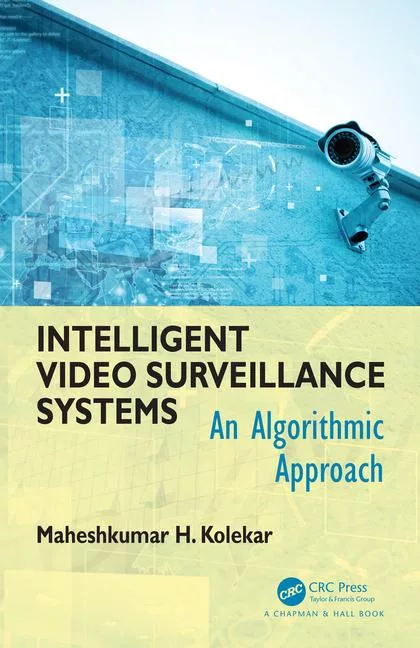Video Surveillance Storage – New Ways to Solve Old Problems
There are really just two main functions of a video surveillance system: to see what the camera sees (in real-time or live) and to see what the camera saw (stored). The most widely utilized of the two functions – to see what the camera saw – is storage or being able to store what the camera sees and to playback the video when desired.
In the past, this was accomplished via video cassette tapes – lots and lots of video cassette tapes. The next technological advancement was to use computer hard disk drives. This reduced costs by eliminating the video tapes, the daily or weekly labor associated with tape rotation as well as the costs of off-site storage. In addition, this greatly decreased the time it took to retrieve a specific incident for playback. The video surveillance markets rapid move towards the wide spread adoption of IP-enabled devices and IT technologies has provided improvements in the quality of the stored video, the length of time or retention of the stored video while reducing the cost of storage and improving the overall reliability of the video surveillance system.
In the past, this was accomplished via video cassette tapes – lots and lots of video cassette tapes. The next technological advancement was to use computer hard disk drives. This reduced costs by eliminating the video tapes, the daily or weekly labor associated with tape rotation as well as the costs of off-site storage. In addition, this greatly decreased the time it took to retrieve a specific incident for playback. The video surveillance markets rapid move towards the wide spread adoption of IP-enabled devices and IT technologies has provided improvements in the quality of the stored video, the length of time or retention of the stored video while reducing the cost of storage and improving the overall reliability of the video surveillance system.
The improvements in the video quality come from improvements in the digital encoding of the video. The most significant of these improvements in the video quality comes from the use of the H.264 encoding standard. H.264 provides an increase in both the quality of the video image and in the compression of the images. Being able to have a higher quality image that requires less storage space can increase the recognition and identification of an event, while increasing the total number of hours, days, weeks or even months stored without increasing storage capacity.
However; improvements in the quality and compression of video are not the only areas that can provide increased storage capacity, retention time and reliability. The use of new techniques in video storage management, IT-based storage solutions and redundancy technologies can provide an even greater increase capacity, retention and reliability.
One of the earliest techniques was the use of time-of-day and day-of-week recording. This was the ability of the video surveillance system to automatically turn on or off the recording function based on not needing to record images or as many images per second at certain times. This type of selective recording did extend the total number of hours, days, weeks and even months that could be retained. But it also had the potential to not be recording anything during an event. There are now video surveillance systems that can take this concept a step farther. By adding some software intelligence and processing capabilities into the video system, it is now possible to automatically reduce the stored video in between the motion triggered events. There are several ways to accomplish this, but one of the most common is to automatically reduce or delete some of the recorded frames.
The actual storage location and type is another area where the adoption of IP and IT technologies has provided improvements in capacity, reliability and cost. Direct Attached Storage (DAS) is currently one of the most common types of video surveillance storage. It is basically one or more computer hard disk drives installed into the DVR or NVR. In some cases, it is the best solution due to a small number of cameras or the remote location of a facility. But DAS solutions in a facility where a large number of cameras are required and access to an enterprise’s network is available can be inefficient. There is the potential to waste or not use potential storage space. Not all video ports on all DVRs and NVRs are always used. But many DVRs and NVRs have few options in available disk drive sizes. Thus, many DVRs and NVRs have disk drives installed that are far larger than the total number of in use camera ports require. This wastes potential storage space, increases costs and increases the amount of power consumed, the heat generated and maintenance costs.
The use of IP-enabled DVRs, NVRs and IP cameras has opened up the use of IT based network storage technologies, like Network Attached Storage (NAS) or Storage Area Networks (SAN). The use of either a NAS or a SAN is more a question of who does the Enterprise IT group support. There are technological differences between the two, but what is more important are the similarities. Both solutions support Ethernet connectivity, usually 100/1000 Base-T(x). Both support the use of standard computer hard disk drive that can also be configured to support several different types of Redundant Array of Independent Disks redundancy. The use of a NAS or SAN can allow multiple DVRs, NVRs and IP cameras to combine their video storage. This eliminates the wasted storage of DAS solutions and increases the reliability of the video storage system by the use of RAID technology.
The move towards IP-based video surveillance has provided some new and in many cases unique solutions to the old problems of storage, retention and reliability. New ways and approaches to solve these problems are still emerging. As one manufacturer develops a new and different way to solve one of these problems, another will see yet a different way to solve the same problem. It is a never ending, but exciting, story of finding new ways to solve old problems.
Looking for a reprint of this article?
From high-res PDFs to custom plaques, order your copy today!






